Aluk To Dolo
Aluk To Dolo ‘The Way of the Ancestors’ is the name given to the indigenous faith of the Toraja, an ethnic group from South Sulawesi, Indonesia. This is a rather official name. It is possible that it was crafted only in the 1950s.
In 2000s, the few remaining adherents commonly refer to it as pa’kandean nene’ ‘feeding the ancestors’ or simply as alukta ‘our way’.
This religion in its original form is probably gone for good. Animists priests have all passed away without successors taking with them the large corpus of myth and social history preserved originally through ritual speech.
The immense majority of the Toraja are now proud Christians. They have nonetheless preserved some major elements of their ancestral culture, namely funerals and the traditional architecture. The associated rites are still performed, but in a modified, Christianized fashion, largely because they are central in the maintenance of social bonds between houses and the building of local political prestige.
Many others rituals, especially those associated with the East (see below) have progressively disappeared. Church recommended the converts to not take part in them, heralding their decline. As communities become split, the larger rites become too expensive and difficult to undertake.
In this article, I based myself mostly on ethnographic researches carried out between the 60s and the 80s.
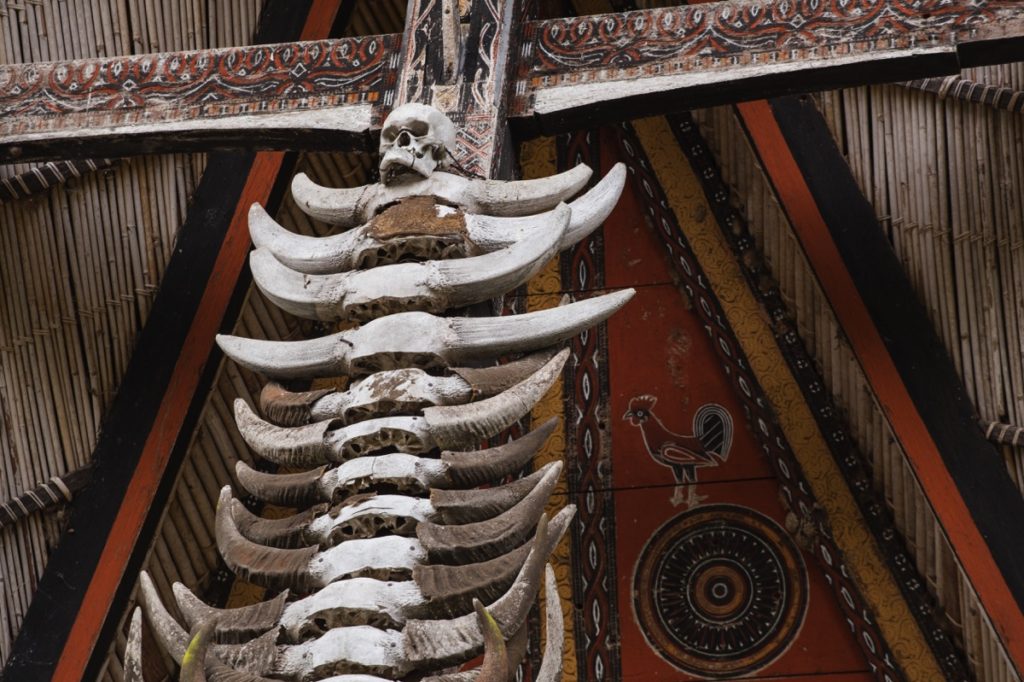
Alukta is based upon the respect of 4 main principles :
- Aluk : the ritual requirement
- Pemali : the prohibitions (hence Aluk To Dolo is also an ethical system), including mourning prohibitions (rice cannot be eaten for instance), marriage rules, incest prohibition …
- Sangka’ : the proper order to follow when conducting ceremonies, housebuildings or agricultural rituals …
- Sanda salunna (litteraly ‘all the rivers’) who encompasses all the above and could be roughly translated as ‘the right way to live’
All together they form the sukuran aluk, the rules that were given to human by Puang Matua (the Supreme God, read this for more details)
Alukta is a belief system without temples, without written doctrine or sacred texts. Everything has been passed over orally from one generation to another. This absence of centralized doctrine also leaves large possibilities for local differences.
The traditional rituals
The most detailed and accessible (ie not in Dutch) source I found about the different original rituals of the Toraja is the second volume of Hetty Nooy-Palm’s monography based on fieldwork carried out between 1966 and 1973 (see sources at the end of the article).
The Toraja distinguish 2 major categories of rituals :
- Rituals of the East (aluk rampe matallo) which aim at improve the life of humans, animals and plants. They can be considered as fertility rituals in general and adress the deities. They include for instance :
- Feasts (bua’ kasalle, bua padang, merok …)
- Agricultural rituals (aluk pare)
- Healing rites and rites to ward off sickness
- Life-cycle rituals held at birth, for the first haircut of a newborn, circumcision, teeth filing, weddings …
- House inauguration ceremony (mangrana banua)
- Rituals of the West (aluk rampe matampu’) which deals with death. They include :
- Funerals
- Ceremony for the ancestors
Eastern rites are also referred to as rambu tuka’ ‘smoke that ascends’ and western ones as rambu solo’ ‘smoke that descends’. Smoke issuing from the sacrifice is considered to act as a medium.
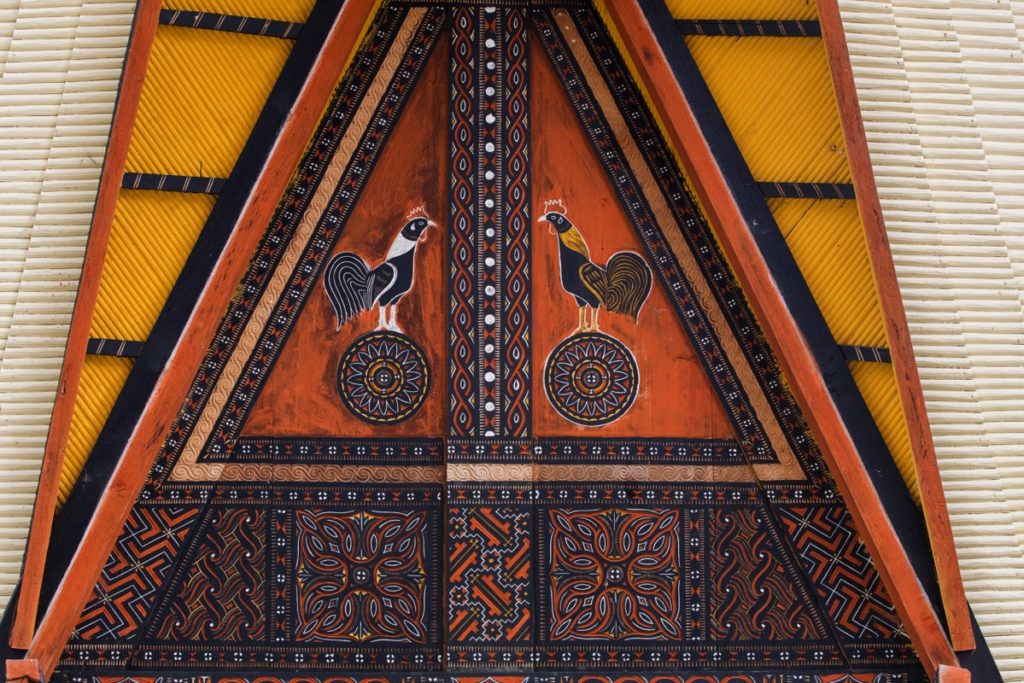
Waterson proposes an alternative translation to rambu in this context as sun, thus translating the two expressions into ‘rising sun’ and ‘setting sun’. The sun being a symbol for the course of the human life, first growing then declining. This is consistent with the practices of performing the sacrifices of the rites of the East in the morning and those of the West in the afternoon.
“The two halves of the ritual complex, East and West, form a balanced whole. Formerly, rites of the East and the West tended to occur in different seasons of the year, and were held apart as much as possible. However, a few rituals occupy a transitional status between West and East. These accomplish the transformation of the deceased into deified ancestors” (Waterson, 2009).
Nooy-Palm explains that rice belongs totally to the East. In order to take no risk, no ritual which has to do with death could be observed between the planting and the harvesting.
Death rituals
Funerals
“Mortuary ritual is the feature most frequently mentioned by Toraja themselves as being the most essential expression of their cultural identity. According to traditional beliefs, the putative purpose of these sacrifices was to provide the deceased with wealth in the afterlife. In fact, the whole point of mortuary ritual, in its many stages, as well as the further pembalikan rites that could be staged long after the death, was to assist the transformation of the dead into ancestors” (Waterson, 2009).
I’ve described the journey of the soul of the deceased in the first part of this article.
The funeral ceremonies come in many different levels of complexity. Each cultural domain of Toraja has its own customs so it is impossible to set general rules for the whole regions. Some very precise local classifications can be found in Nooy-Palm’s or Waterson’s books.
Simple ceremonies
The progression is still more or less the same, whatever the district :
- For the poorest (usually slaves), a simple ceremonies of one night was held where a minimum of one pig was slaughtered. Nooy-Palm reports some even simpler ceremonies held in dire times in which only an egg was consecrated.
- Ceremonies could get a bit more elaborated with the killing one one buffalo and a pig. Following levels last longer (3 days, 5 days, 7 days) and imply the sacrifice of more buffaloes and pigs (up to 7 buffaloes and more than 20 pigs).
Up to this level of the ceremony, the deceased is considered ‘dead’ immediately. Only the deceased who will be given a higher-level ceremony are considered ‘sick’ until their proper burial.
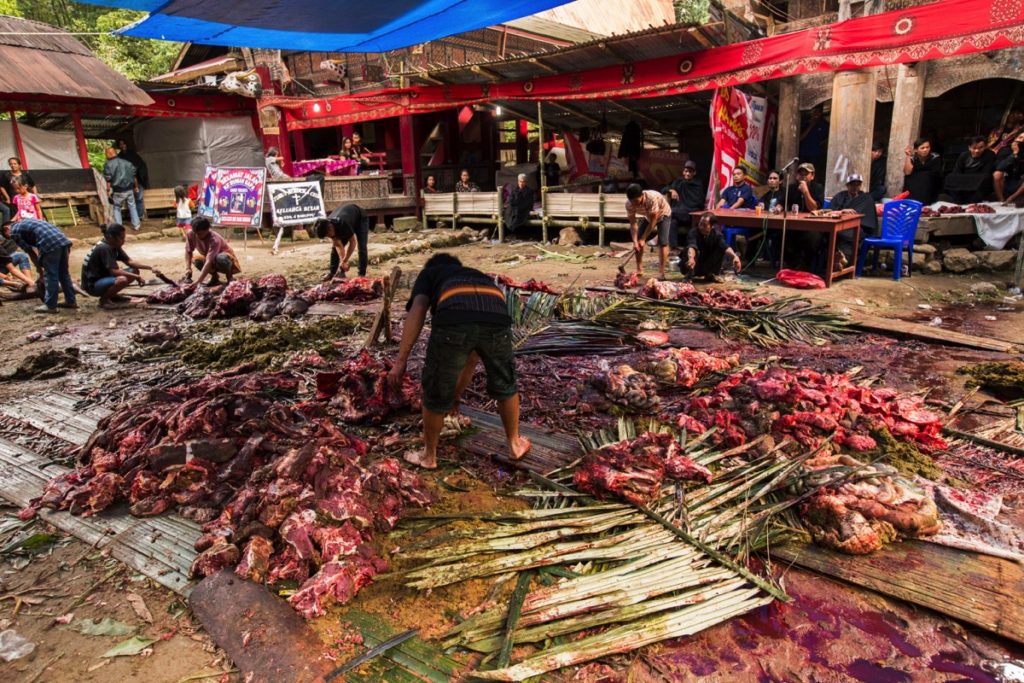
Commoners and slaves were traditionaly not supposed to have more than a one-night ceremony (which implies the slaughtering of one buffalo and pig), but according to Waterson they could purchase the right to a 3-night ceremony by killing an extra buffalo, half of which being given to the nobles of the village.
A special procedure was followed for baby who died before cutting their teeth. The corpse would be placed immediately in the evening in a hollowed out antolong tree. The cavity is covered by the hairy fibers which grows in the axils of the sugar palm (ind. ijuk). In the case of a noble baby, one buffalo would be slaughtered but usually only a pig and dog would be sacrificed.
- An even longer ceremony of 9 consecutive days is possible but according to Nooy-Palm in the Kesu’ area, people were reluctant to organize ceremonies lasting more than 3 consecutive days as it was considered difficult. The rich prefered higher ranked ceremonies which allowed an intermission.
Complex ceremonies
- Higher-level ceremonies are divided in two phases. Some sacrifices take place on the days immediately following the death, and the second stage is held sometimes months or years after, depending on the ability of the relatives to gather the necessary ressources.
According to Waterson, “accounts are passed in the oral memory of gigantic funerals, for instance some members of the ruling house of Nanggala had a funeral of 400 buffaloes“.
Some privileges are attached to these high-level ceremonies, hence they also serve the purpose to display one’s status. In the old days, most of the ceremonies were forbidden to slaves and the most complex one the prerogative of the nobles. Nowadays, a majority of people would not dare to hold a funeral of a too high rank for its own status, but some people who have been sucessfull in business or administration hold high-level funerals to improve their social status.
Status markers, each one requiring a minimum number of buffalo slaughtered to be allowed depending on the region, included :
- The dividing of the sacrificed meat from a special distribution platform (bala’ kayan)
- The building of a corpse tower (lakkean)
- The holding of the second-stage of the ceremony on a ceremonial ground built specially outside the village (the rante)
- The beating of a ceremonial drum
- The carving of a wooden effigy (tau-tau), which could be temporary or in the case of the largest funeral placed in a balcony beside the rock-cut tomb chamber after the ceremony
- The erection of a megalithic memorial (simbuang batu) on the rante
- A cockfight
It is common to make the buffaloes to fight each others before sacrifice. Funerals were usually undertaken in the afternoon. Ma’bong dancers stayed up all night to sing songs about the life of the deceased.
Funerals are not exactly sad events in Toraja. You can notice that Toraja use the Indonesian word pesta (party) and not acara (ceremony) when they refer to it.
At night, all the guests from the family spend the night in the house of the deceased, cousins spend time together, people sing, play cards and men drink a lot of balok (palm wine stored in bamboo). In the past, before the schooling of the kids, funerals were also an important occasion for youth to find a mate because lots of guests would come from outside the village.
Below some pictures of a more prestigious ceremony I assisted near Kesu’ in 2016 :
If the funeral was of high-enough ranking enabling the making of a tau-tau, the bombo (ghost, more info here) of the deceased was thought to inhabit it before departing to the Puya with the completion of the necessary rituals. Nowadays, Christian consider the tau-tau simply as a portrait of the deceased.
Two-stages funerals often imply that the body of the deceased is kept at home for a very long time. Today, preservatives like formaldehyde are injected in the corpse to prevent it from rotting. Before, it was ‘smoked’ (dirambu) with a mixture of pine, citrus and other aromatic leaves which are burned beneath the coffin. The mourners would politely ignore the smell of decomposition.
Not all buffaloes are equal
Toraja language has a very extensive vocabulary to describe a buffalo based on its color and its horns. Not all buffaloes are equals, white and grey ones have little value and the pinkish one bred in the lowlands are considered worthless as mortuary sacrifices. Black ones are more adapted to ceremonies, the most expensive one are the are piebald buffaloes.
The Toraja water buffalo is not a work animal. In many parts of the highlands, the task of plowing the fields is accomplished by men.
Funerals as a social event
The guests at a funeral are divided between the members of the deceased’s houses (pa’rapuan) and its affines (rampean). The pigs or buffaloes brought by the first are considered more as testimony of grief towards the family and not considered strictly as debt even if in the end repayment is expected. Everything brought by the second group is written down and must be repaid in similar value in the future.
Funerals (along with other rituals in the past) is a moment when all the relationships of one tongkonan are activated and the occasion to display and make one’s status.
All the meat sacrificed is distributed among guests. Even in the time of Alukta, only a small share of the sacrificed meat was set aside for the gods and the ancestors. There was actually very few sacrifices offered entirely to the gods, essentially the ones made to purify oneself from a sin. For instance, Nooy-Palm reports that Toraja dreaded the consequences of incest (failed harvest and diseases). They would atone this sin by an expiatory sacrifice of a buffalo who was entirely burned. It was called ma’rambu langi’ ‘to cover the heaven with smoke’.
The division of the meat was once the duty of the indigenous priest (to minaa), nowadays it is usually done by a respected elder of the community.
Waterson explains : “the division and distribution of meat at funerals is a key social moment in Toraja life […]. More than any other procedure, this one establishes and maintains claims to precedence. Partly, one’s prestige and the size of the share to which one is entitled depends upon the ‘boldness’ of one’s own sacrifices; the more pigs and buffaloes one is known to have slaughtered, the more meat one will receive. But it is also based upon inherited rank; the recitations of the meat-divider here become a repository of historical and genealogical memory, continually kept alive in performance and having real social consequences in the present“.
“The meat-divider stands on top of a tall platform and recites a chant, calling out the names of a string of founding origin houses while throwing down their shares of meat. The precise houses named will differ from area to area, and the amount of meat distributed to them depends partly on the size of the funeral and wether there is any descendant present to collect it. Some key sites in Toraja history like Banua Puan or Ullin have not had a house standing on them for centuries but they still receive a share of the meat, even a scrap. Christian often ‘forget’ to give these shares of meat, claiming that they are part of the aluk (‘religious’ prescription) rather than adat (permissible ‘custom’). They don’t employ the services of a to minaa either.”
Besides ancestors, some shares are distributed in a purpose of reaffirming historical ties between tongkonan (which without a doubt exchanged buffaloes in precedent funerals), other to settle past debts and others are presented to house with which the deceased maintained close links in his or her lifetime.
This form of ceremonial economy is very common in Indonesia, for instance in Nias or Sumba. Most of the ethnic groups of central and North Sulawesi used to hold similar prestigious feasts before the arrival of the Dutch missionaries.
The cost of a funeral
Price of buffaloes can goes up 100M for the rarest. Organizing a funeral costs a fortune, because of course, children want the best for their parents : you must pay the workers to build the temporary structures to accomodate guests, provide them with food, drink and cigarettes, get the buffaloes and the pigs for sacrifice …
In the past, most of the buffaloes killed would have been raised by the people themselves. Herding used to be the job of children but now that they are all in school, fewer households are keeping buffaloes. To keep up with ceremonial demand, many buffaloes must be imported from other parts of Indonesia.
Waterson elaborates : “people I knew were divided in their opinions about funeral expenses; wealthy aristocrats are the ones most likely to maintain that tradition must be upheld, while those of moderate means feel sharply torn between the effort to fund their children’s education, and the endlessly recurrent obligations to find pigs or buffaloes for mortuary occasions. Though many people may say that they would prefer only small funerals, it often happens that, especially when a parent dies, they will succumb to pressure to do the right thing and maintain the family honour in the eyes of the community”.
I personnaly heard on different occasions (both in Rantepao markets and also from Toraja migrants in other parts of Indonesia) people lamenting about this situation. “Kalau ada pesta tidak potong kerbau orang malu, tapi anaknya tidak masuk sekolah orang tidak malu” (People won’t dare to not sacrifice a buffalo at funerals, but they dare not sending their kids to school)
In the collective psyche, the proper way to demonstrate one’s grief is to sacrifice buffalo at funerals. A child or a relative who would fail to do so would show a great disrespect to the deceased parents and probably be looked down by the whole community as a bad person.
“Ceremonial economy is deeply embedded in social life in so many different ways. First of these is its role in the expression of kin relationships, which accounts for the moral and emotional force that makes funeral attendance an inescapable social necessity. The chain of paired credits and debts thus engendered between affines, and constantly renewed, creates a public bond between them and forces everyone, in their role as debtors, to strive to meet their obligations. This means working hard to raise or purchase more livestock.
Then there is the political contest involved in ritual display, by means of which men have traditionally built a reputation for themselves as being among those who are not afraid to ‘sacrifice boldly’ (barani mantunu). The public division of meat is likewise part of the means by which political and rank relations are constantly tested and reaffirmed. It is a characteristic feature of potlatch and other ceremonial economies that prestige atrophies if not continually upheld. Thus many descendants of high-ranking families feel reluctant to allow the dwindling of status that would inexorably follow upon any failure in their ritual obligations.
And finally, there is today the heightened and self-conscious sense of ethnic identity, which also plays a part in the pride felt in the maintenance of a unique and colourful tradition” (Waterson, 2009).
Fertility rituals
Besides the ceremonies celebrating the building or the repair of a tongkonan, all fertility rituals have disappeared. Some isolated elders may still prepare some offerings for the spirits, but the great public celebrations will probably never be held again.
Offerings, which could be as simple as betel, were laid out either towards South or the North, wether they were directed at the ancestors or the deities. Both are considered a source of power and blessings that can be tapped by the medium of offerings.
The great fertily rituals in Sesean : maro and ma’bua
Maro
A cycle of prestigious rituals could be completed only by the most sucessful houses. A description of two of the major steps are given by Volkman (based on fieldwork near Mount Sesean between 1976 and 1978). Additional details can be found in Nooy-Palm.
The maro ritual conclude the transformation of the ghost of the deceased into a deified ancestors (deata). A bamboo tower up to 7m high is built. Members of the tongkonan hang to it precious heirlooms (pieces of cloth said to be gifts from spirits or from ancestors, ancient iron blades …) considered potent and normally subject to strict taboos.
For several nights, several to minaa gather in the house holding the ritual. They chant in ritual speech, tell myths and genealogies and overall exhort the spirits to give their blessings.
On the final day, a large crowd gathers and usually enter trance with the chant of the priests. Women are especially affected. People are possessed and entered by the spirits, they may cut themselves without drawing blood, climb ladders of knives, or dance on hot coals. This ritual considerably enhances the power stored in the newly blessed house. She becomes subject to new prohibitions for instance.
Ma’bua
Once a tongkonan has completed the maro, it becomes possible to undertake the ultimate ritual : ma’bua. According to Nooy-Palm there is actually different levels in the ma’bua. The greatest of all, bua’ kasalle was truly extravagant. Nooy-Palm reports 2 instances of it held in Kesu in 1923 and Pangalla in 1921. Waterson reports part of one held near Mount Sesean in 1983.
This ultimate ma’bua starts with the selection of a very-high status woman to assume a ritual role called tumbang as well as several other high-status women to assist her. In a first phase of the rite, an effigy of bamboo, grasses and leaves called anak dara ‘maiden’ is introduced with many sacrifices (Volkman talk about dozens of pigs, maybe a hundred) as well as trance dances.
Then the women and the effigy enter the tongkonan where they will stay most of the time during one year. The tumbang must respect several prohibitions : she cannot attend a funeral, she should touch the ground as little as possible (she is carried around outside the house), she may eat nothing but rice and chicken. She sleeps with the effigy and must offer it drink, food and betel…
Once this period is over, the final part of the ritual is staged in the rante outside the village. Through a series of ceremony, the tumbang symbollicaly dies and rises again.
It is said that from this moment, everyone and everything will give birth. The tongkonan who have sponsored the ritual is now powerful, dangerous and sacred. A stranger may not enter without first taking three sips of uncooked water from the cistern.
Small scale ma’bua were still held probably until the early 90s. Waterson reports having witnessed one in Ma’kale in 1979 and part of another in 1983 in Sareale. Chances of this ritual being staged again are now very small because it was organized by a whole group of villages which formed a ritual community expressly for this purpose.
Rebuilding of a house (mangrana banua)
The Toraja word mangrara means ‘to anoint with blood’. Sacrifices made to celebrate the rebuilding of a house ensure the blessings for the house and its inhabitants.
It is maybe the last ritual of the East still celebrated by Christian converts, even though they have adapted it by substituting Christian prayers for the making of offerings (they still sacrifice pigs but don’t offer them to the ancestors and deities) and the traditional chants of the to minaa.
Again, several levels exists originally depending on the rank of the owner and the house each commanding different offerings to be made during the stages of the construction and the final days of celebration and a specific chant.
Buffaloes are not sacrificed when it comes to houses, only chickens and pigs. In the chant the to minaa used to :
- Summon the deities (deata) from the three level of the cosmos (sky, earth and under the earth) and from all points of the compass then the ancestors (to dolo) from the founder of the house until the most recently deceased. They are informed that the rite for the house is about to be performed.
- Ask for forgiveness for any fault or breach of the customs done by members of the community. This ‘cleansing’ part is called ma’sarrin.
- Request blessings from Puang Matua
A comprehensive description of the necessary rituals for the building of a new house can be found in Nooy-Palm (vol I).
According to the myth, the houses built by humans imitate the house of Puang Matua in the sky. His house is oriented towards East, facing the rising sun. Toraja always orient their houses to the north and it is prohibited to imitate the creator, otherwise ill fortune would befell on the house occupants.
This orientation is still respected today, this is why houses in a village or a compound are always aligned.
Traditional religion and the impact of Christianisation
According to Nooy-Palm, by 1975 almost 60% of the population had embraced Christianity (primarily Protestantism). If 30% of the population was still adhering to Aluk To Dolo, most of them were already old. All the animist priests (to minaa) were also elders with no young candidate to preserve their knowledge. The last priest of the highest rank (burake tombolang) had died in 1976 without a successor.
Despite its legalization as a sect of Hinduism in 1969, the shares of Alukta followers in the populations has kept dropping. Waterson gives the following figures : 15% in 1980, 10% in 1990, 5% in 2000.
As explained above, Toraja people have maintained some very singular features of their old religion : primarily funerals and house ceremonies. They have survived but are now virtually always celebrated in an adaptated, Chirstianized form. See below a documentary filmed back in 1948 :
At first glance, there are few differences between modern Christianized and Aluk Todolo rites. But in fact the function and the symbolism of the rites have been deeply modified to adapt them to the Christian doctrine. Offerings of a share of the meat to the spirits of the ancestors have disappeared, there is no more animist priest (to minaa) leading the ceremony and Christian prayers are added instead.
Sacrifices are not anymore a way to guarantee the transition of the ‘soul’ of the deceased to the land of the dead, thus preventing them from disturbing the livings. It is simply viewed as a cultural custom.
“Here as elsewhere in Indonesia, missionaries struggled to decide which parts of the indigenous aluk were incontrovertibly ‘religious’, and thus incompatible with a conversion to Christianity, and which parts could be reclassified as ‘custom’ adat and allowed to continue. In drawing these distinctions they introduced an artificial split in what had formerly been an integral and indivisible system. Their views about which parts would have to be abandoned changed over time, as resistance to their elimination of some practices proved obdurate. The division and distribution of meat at funerals was one example. Initially classified as aluk, it was later redefined as adat, and continues to be a feature of great social importance.” (Waterson, 2009).
The missionaries and the colonial administration totally failed at putting an end to the sacrifice tradition, that they considered shockingly wasteful. They were more successful when it comes to rites involving trance, that they considered demonic. It was one of the most striking features of some major rituals summoning deities to request their blessing, the trance being considered as the signs that the deities have answered the call.
I leave the conclusion to Waterson, whose monography is truly the backbone of this article :
“As the Toraja world becomes increasingly disenchanted, many of the rituals once held to be vitally important to the maintenance of cosmological order and social wellbeing are transformed, she notes, into ‘non-obligatory spectacles’. At the same time, there is a shift in meaning away from their former efficacy (the conviction that the ritual ‘worked’ in ensuring the deceased’s passage to the afterlife, or the flow of fertility into the community and its farm land) toward a new concern with ‘authenticity’, their ability (even in their newly adapted and truncated forms) to function as dramatic emblems of ‘Toraja’ identity within the modern, multi-ethnic state, and even internationally, in the eyes of visiting tourists. Whatever the burdens felt in meeting ritual obligations, it is perhaps in the moment of performance that people may most vividly enjoy that sense of their own identity, as something to be held on to in the face of change“.
Other articles on Tana Toraja
Toraja Culture : People and History
Toraja Culture : Aluk To Dolo
Tana Toraja Travel Guide
Sources
- R. Waterson, 2009, Paths and rivers: Sa’dan Toraja society in transformation, Leiden : KITLV Press.
- H. Nooy-Palm, 1979, The Sa’dan Toraja; A study of their social life and religion. Vol I. – Organization, symbols and beliefs, The Hague: Nijhoff.
- H. Nooy-Palm, 1986, The Sa’dan Toraja; A study of their social life and religion. Vol II. – Rituals of the East and the West, Dordrecht: Foris.
- T.A. Volksmann, 1985, Feast of Honors; Ritual and change in the Toraja highlands, Urbana and Chicago: University of Illinois Press.
- C. Pelras, 1996, The Bugis, Oxford: Blackwell.
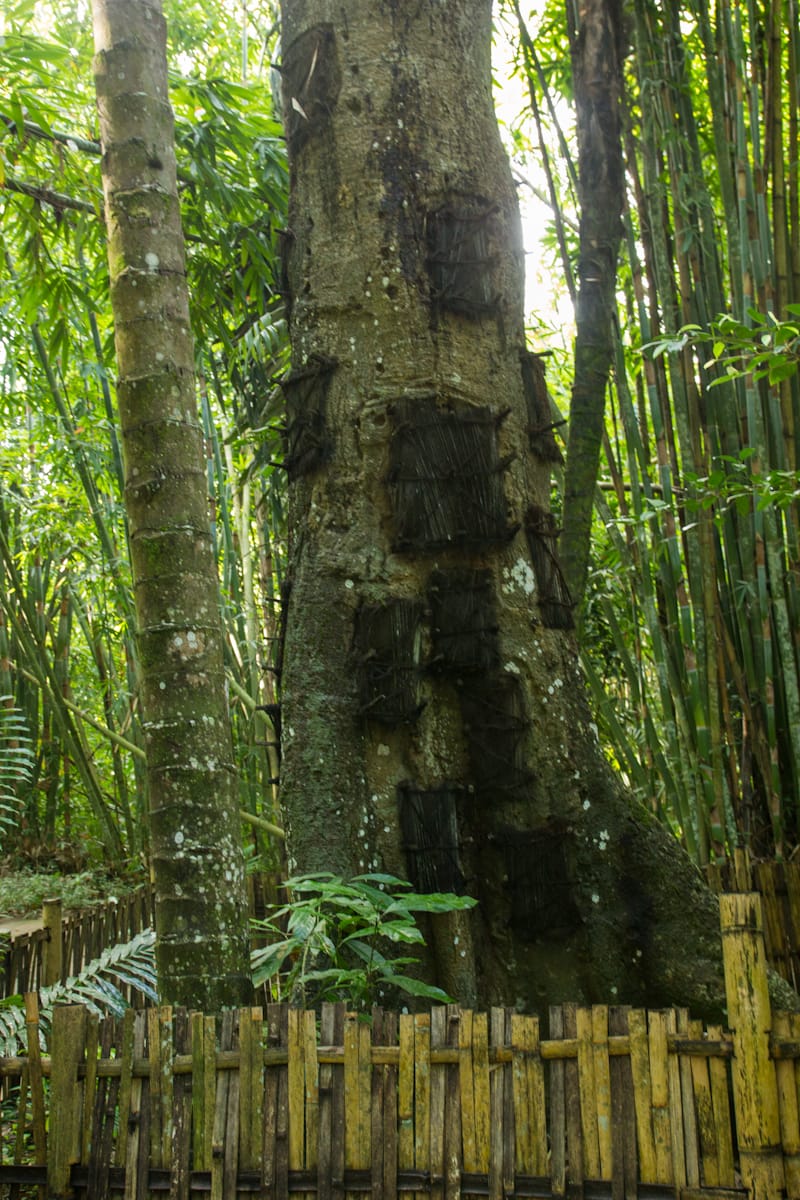
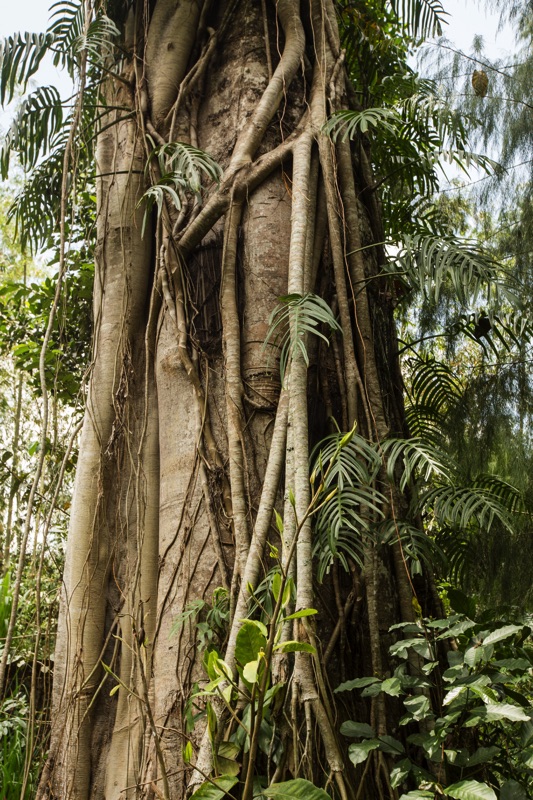
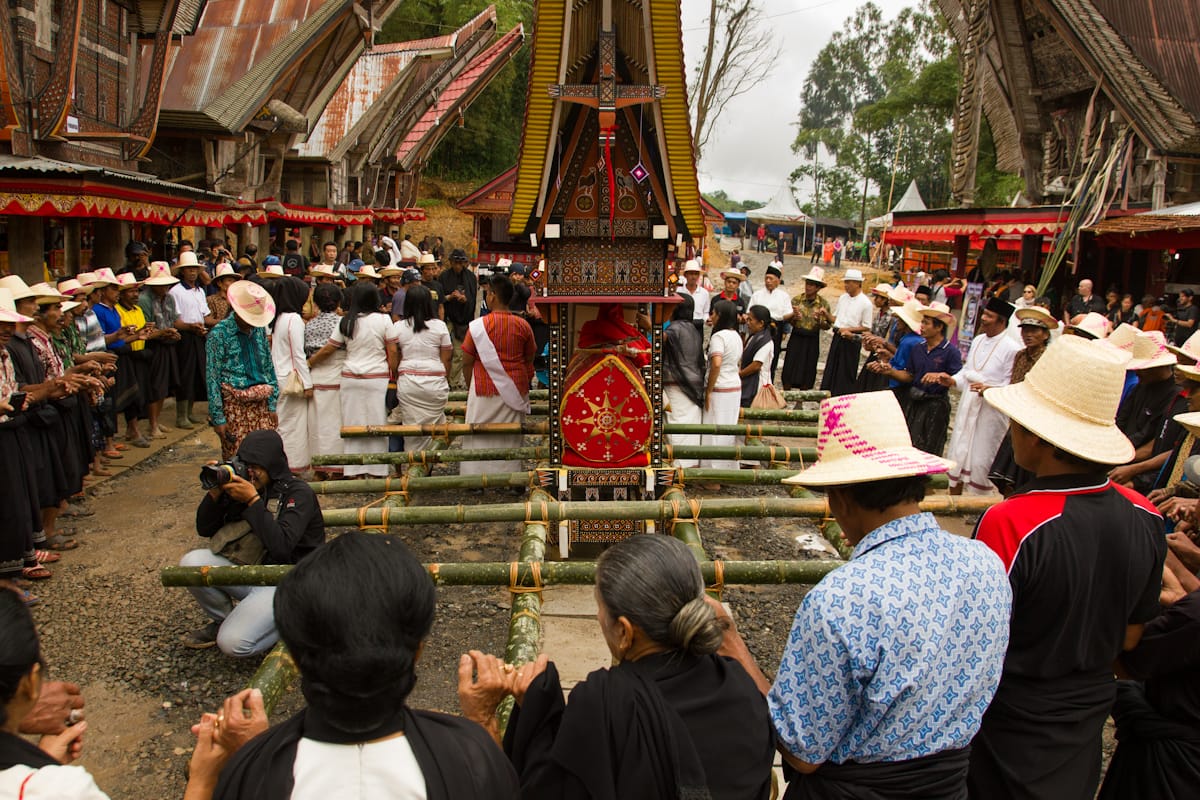
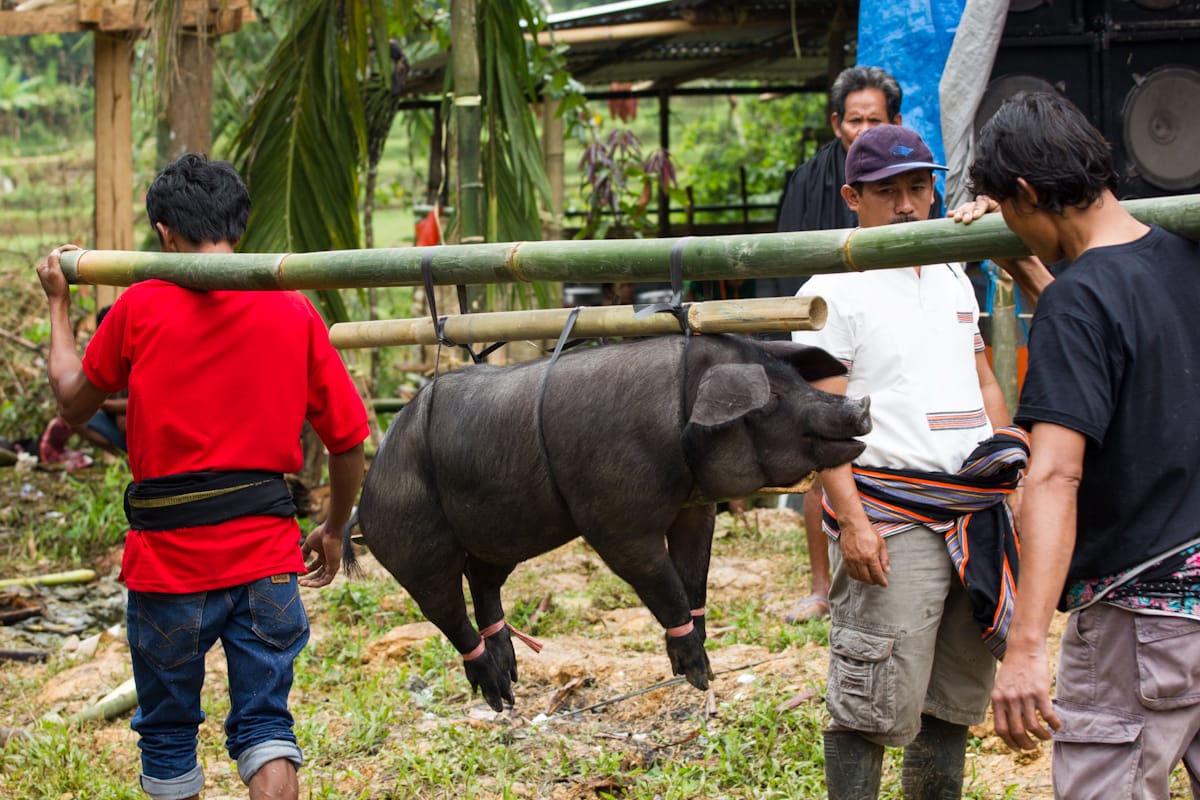
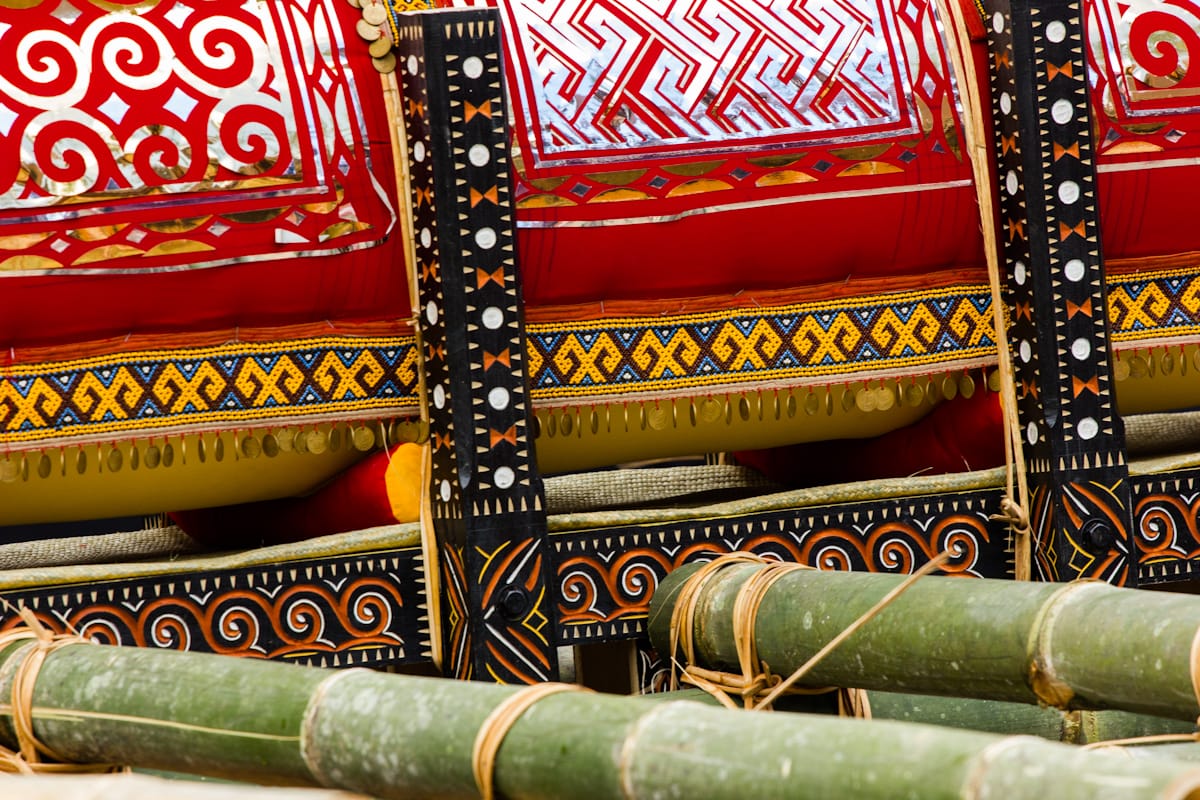
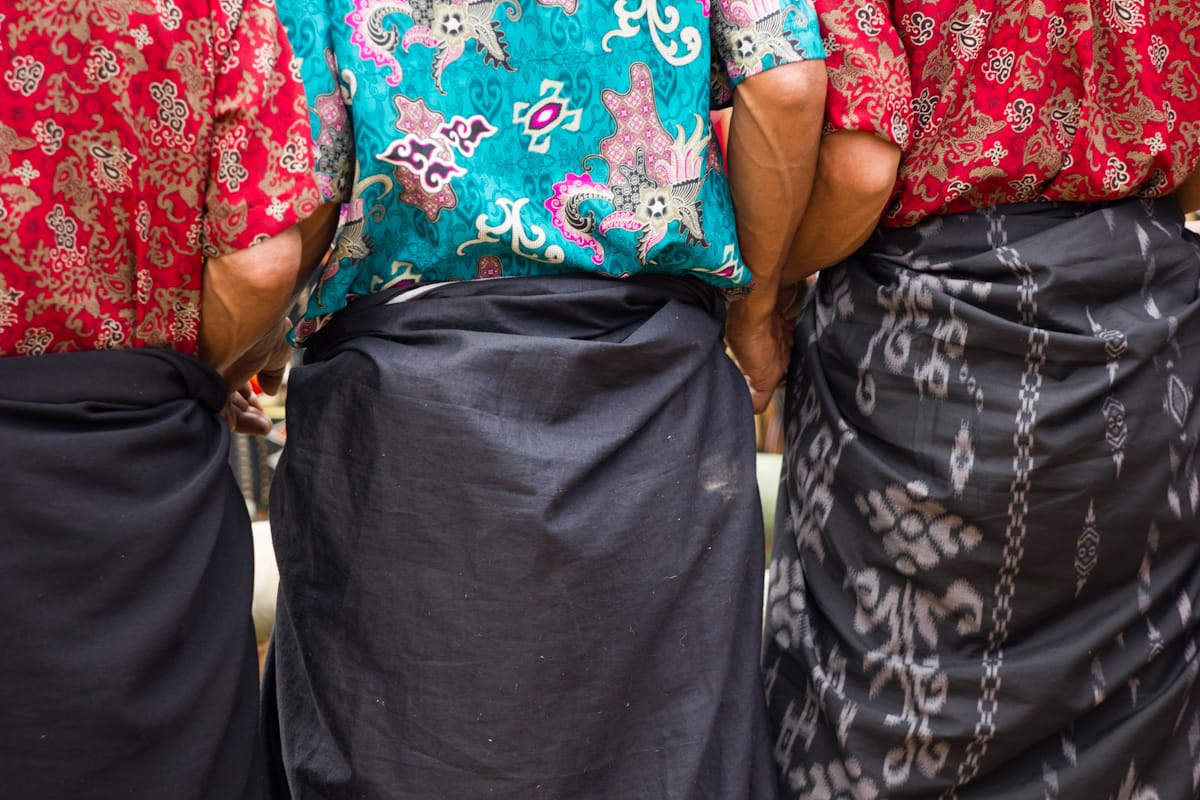
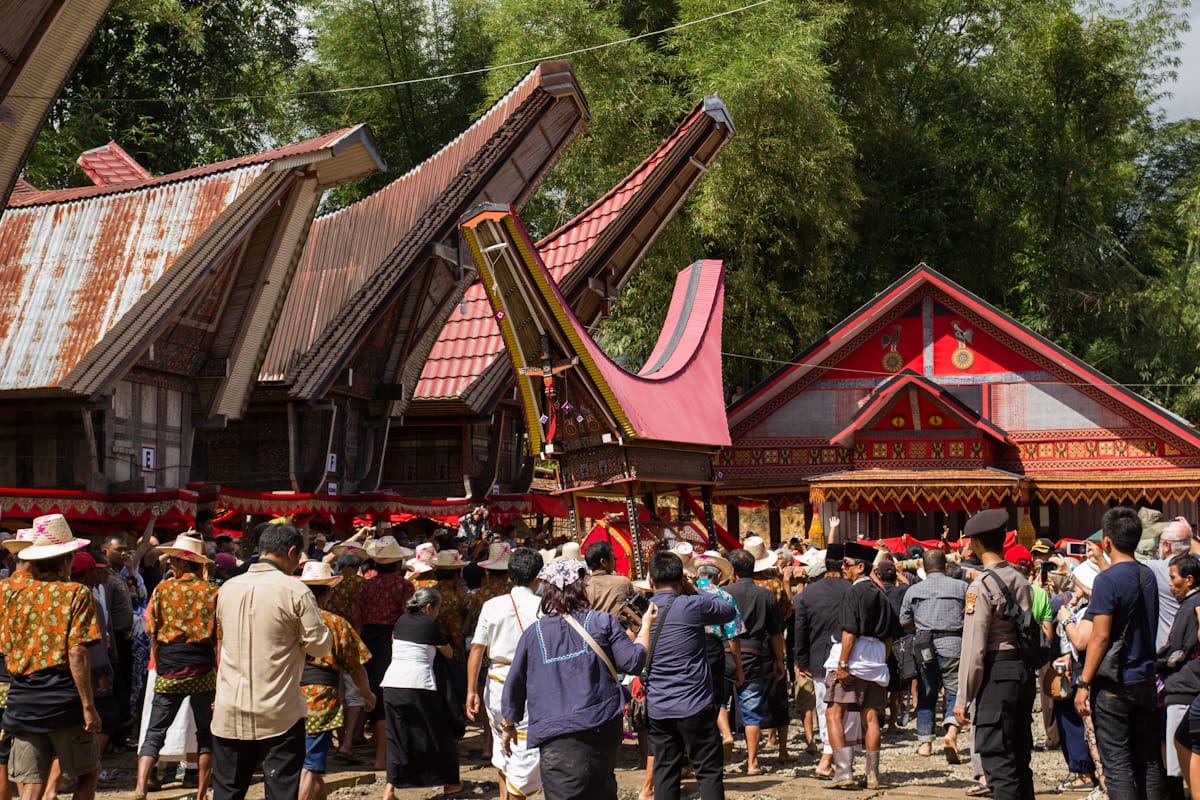
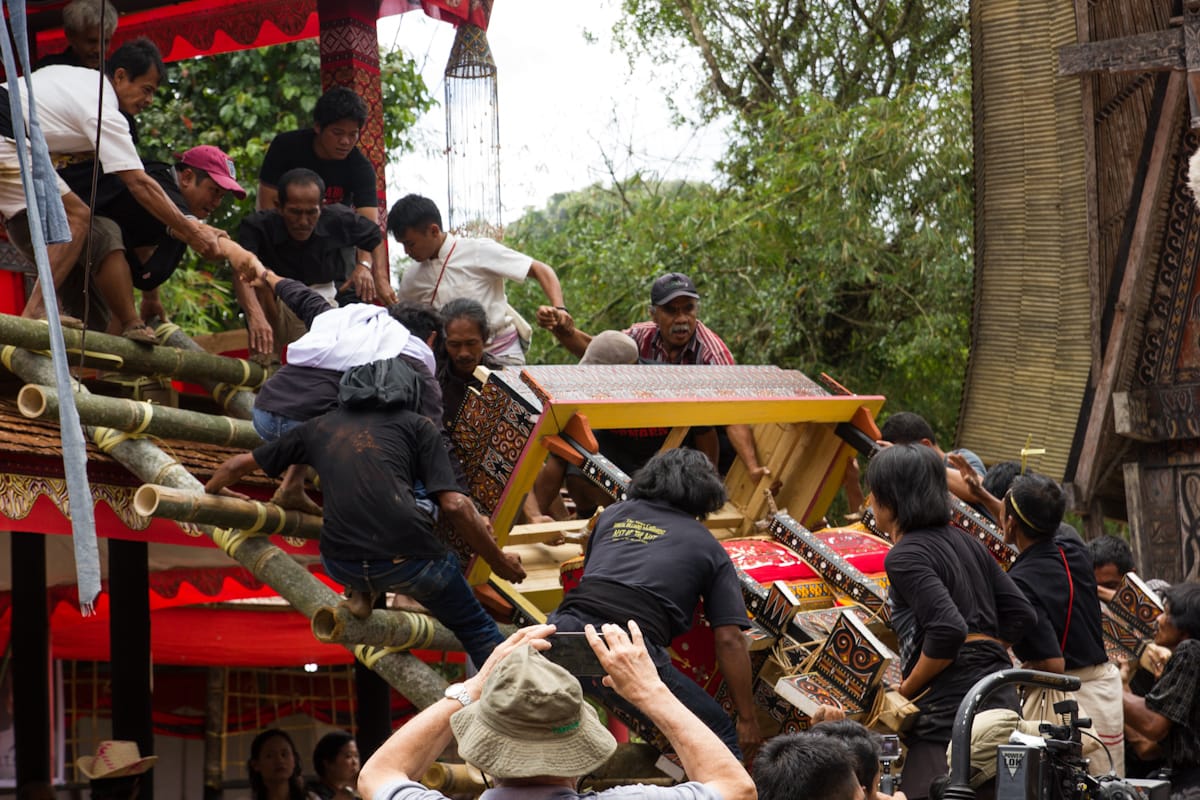
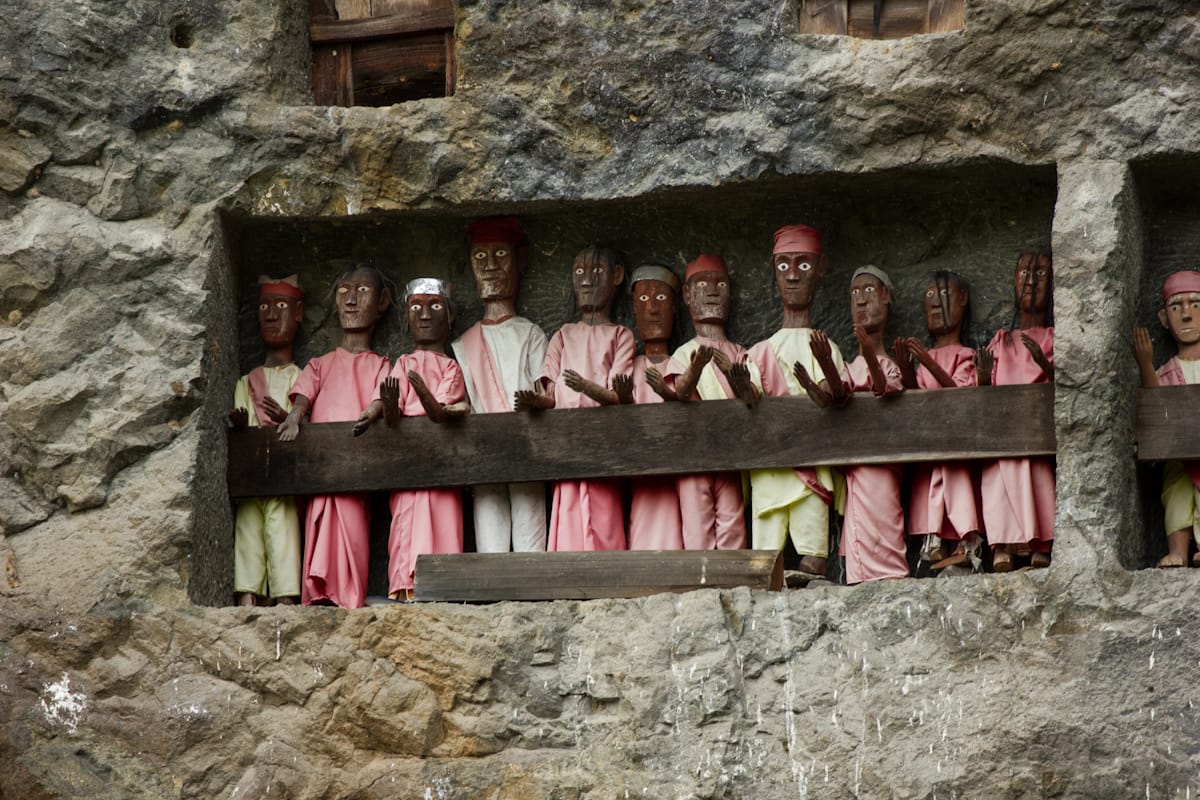
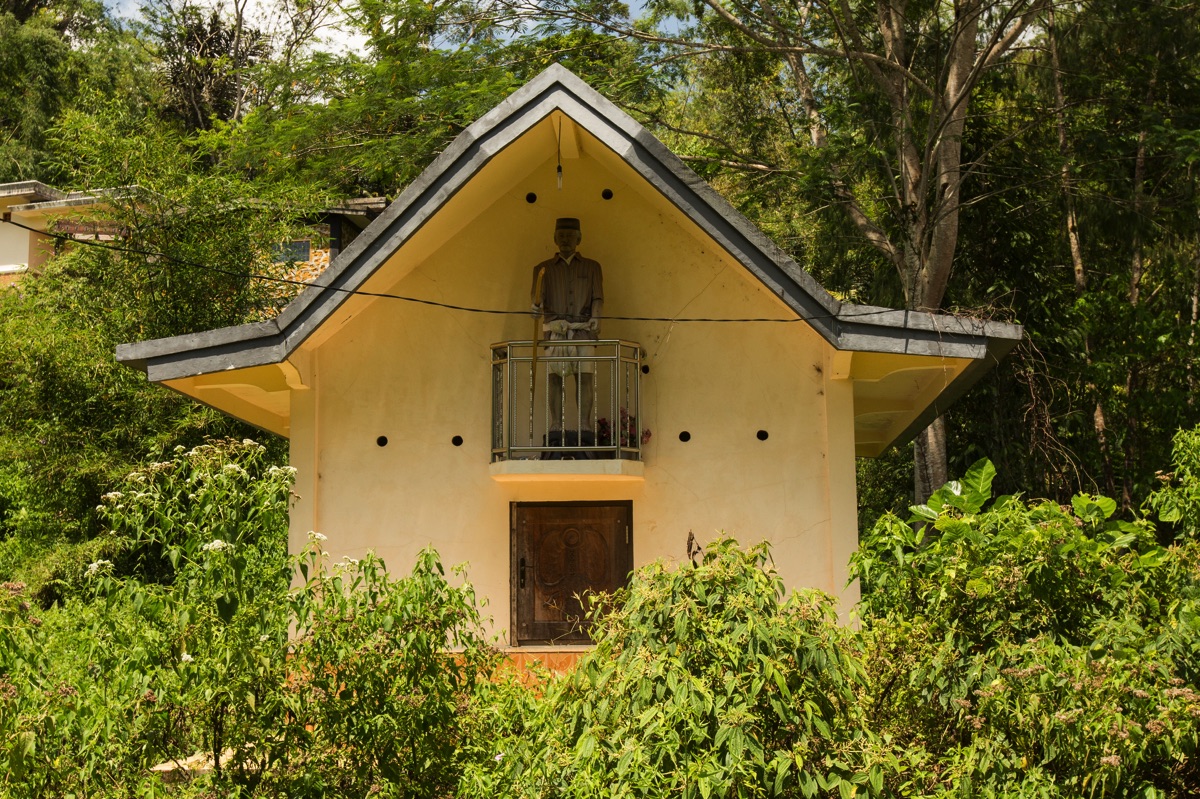
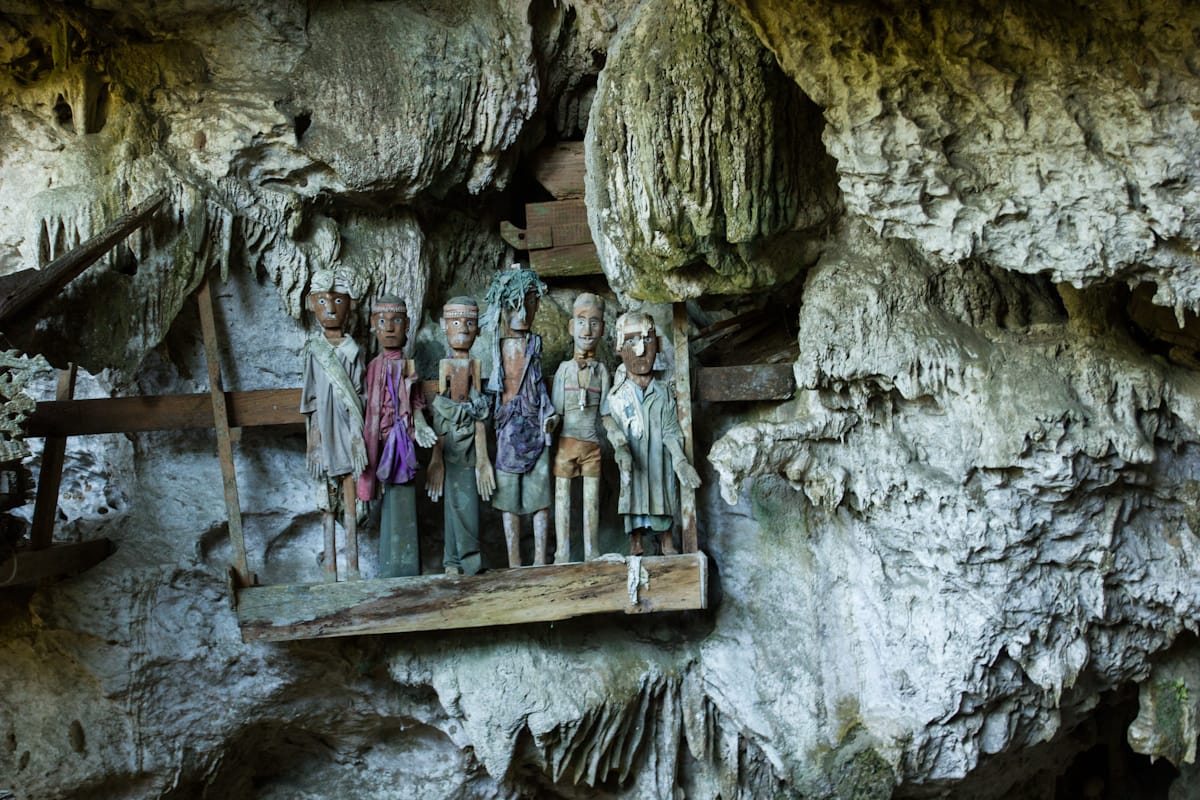
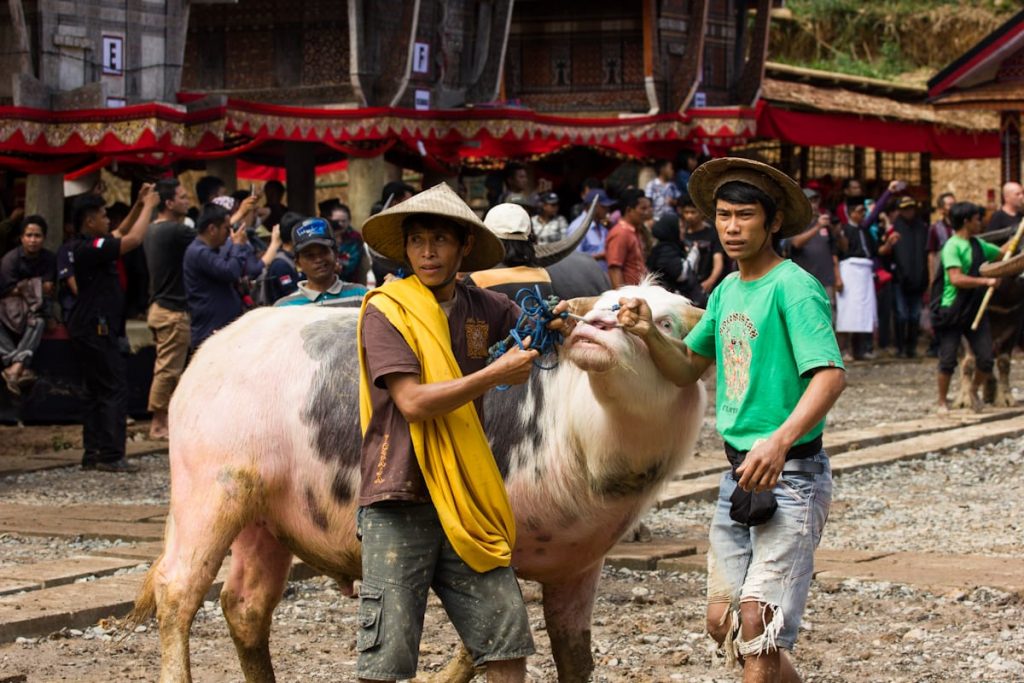
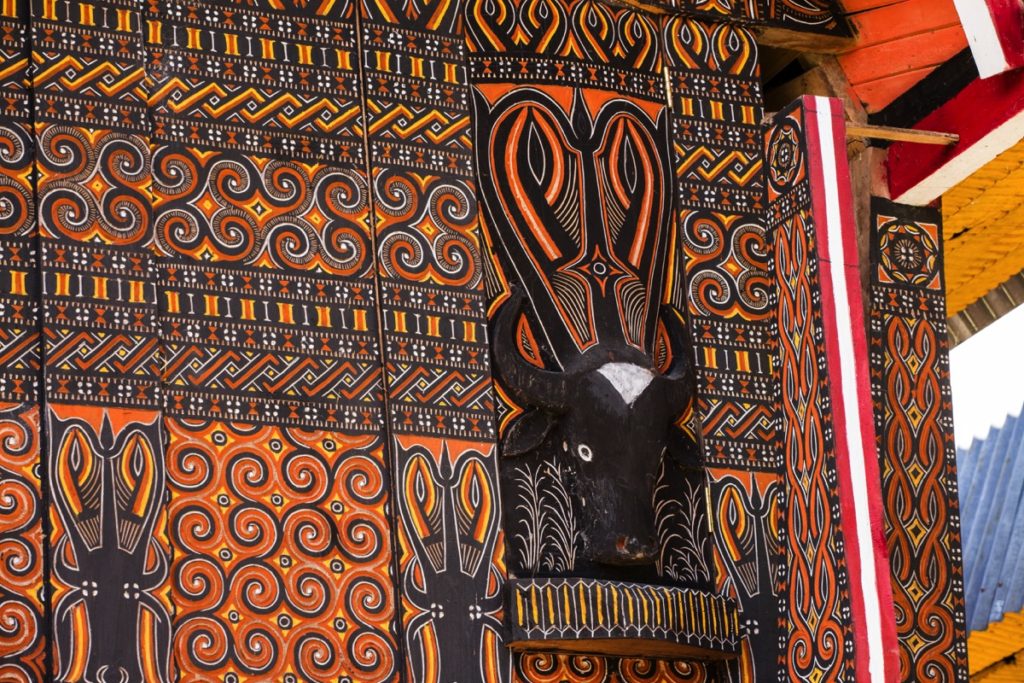
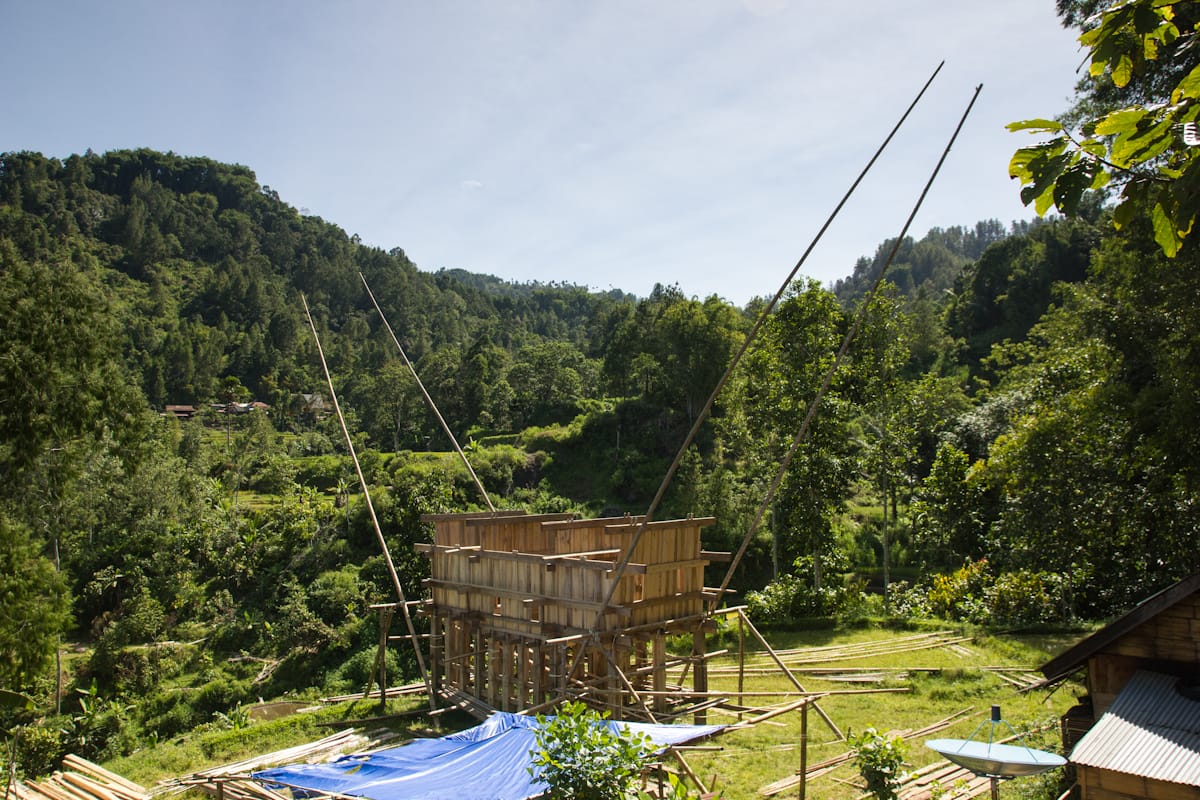
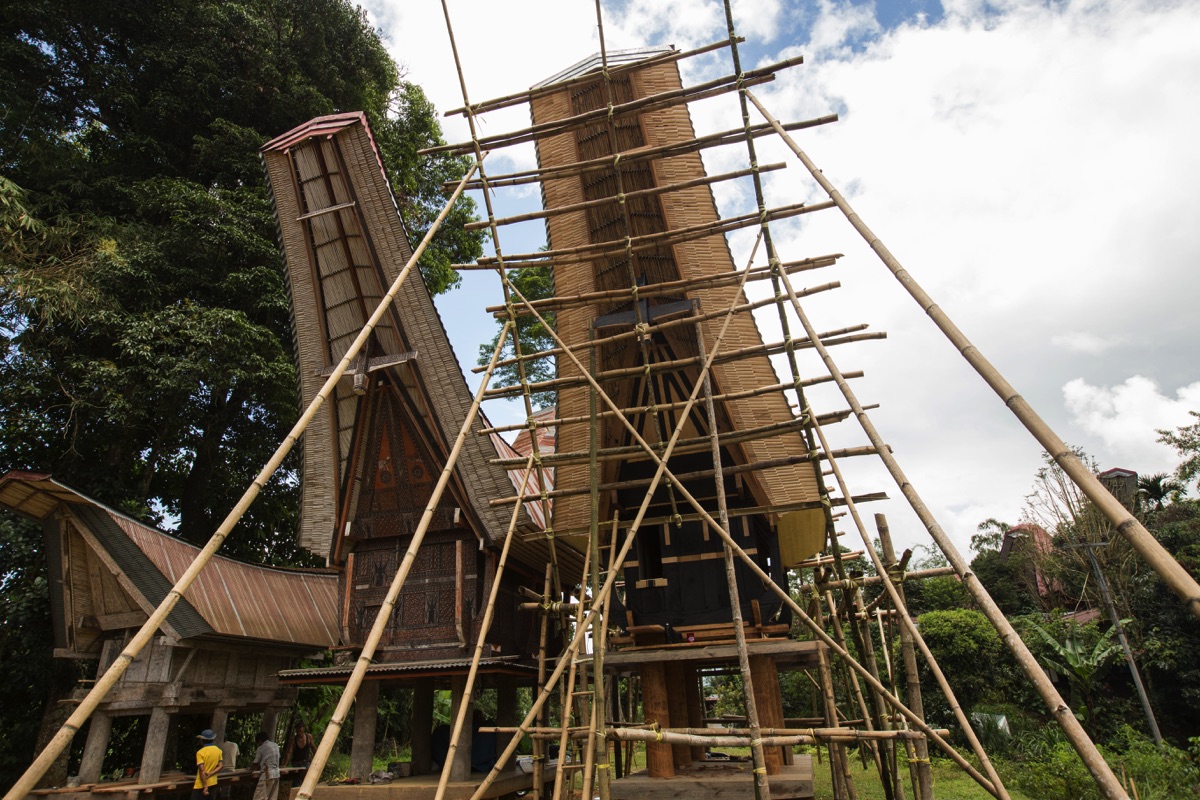
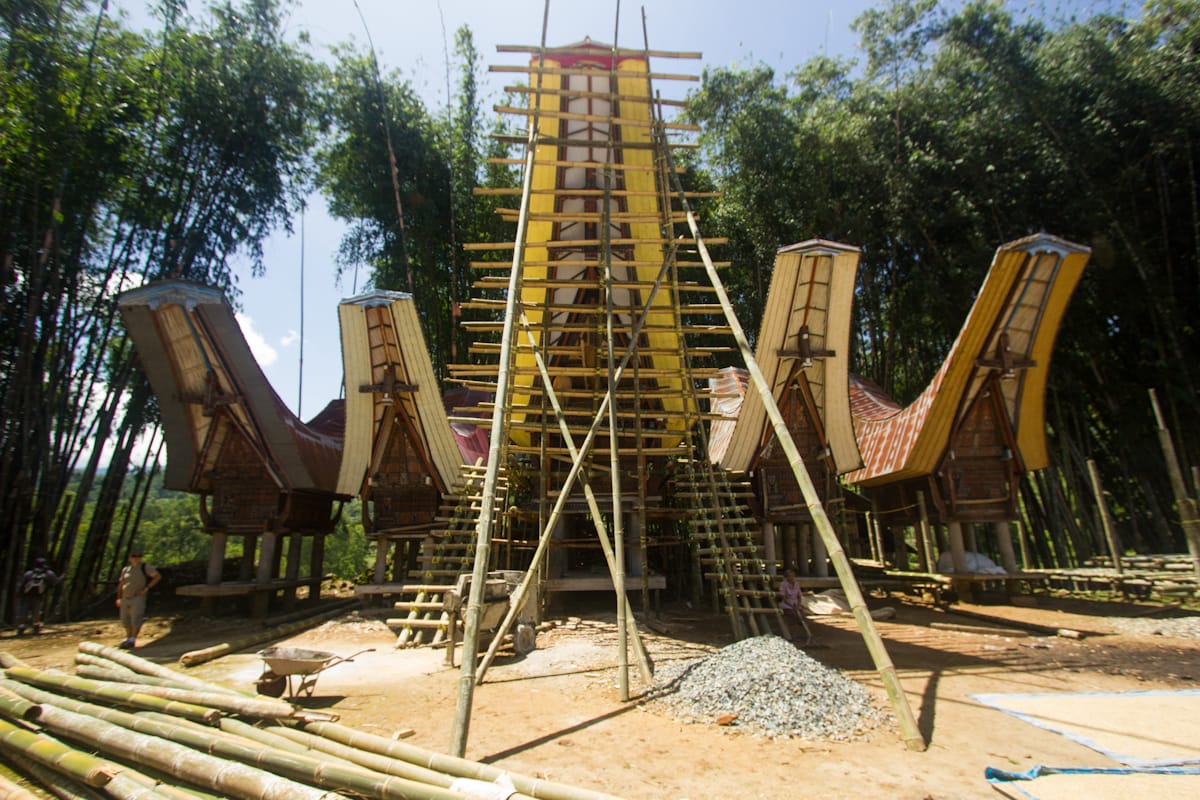
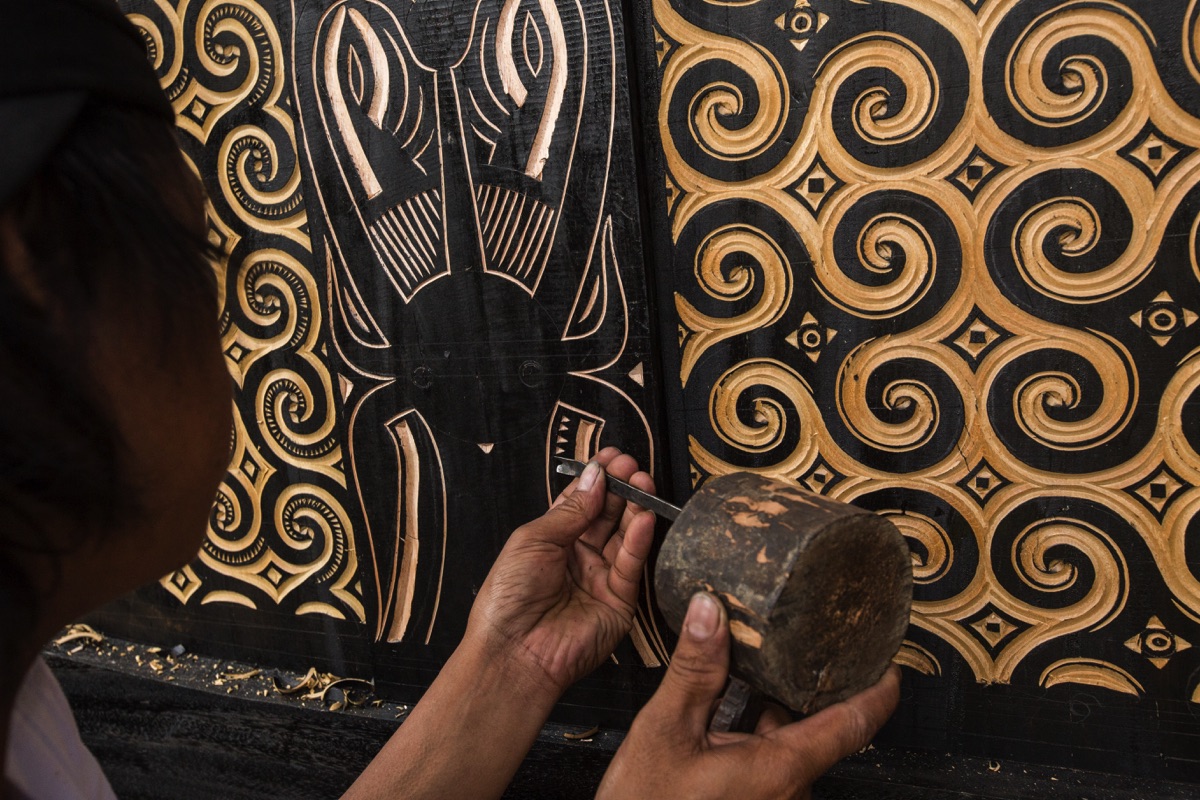
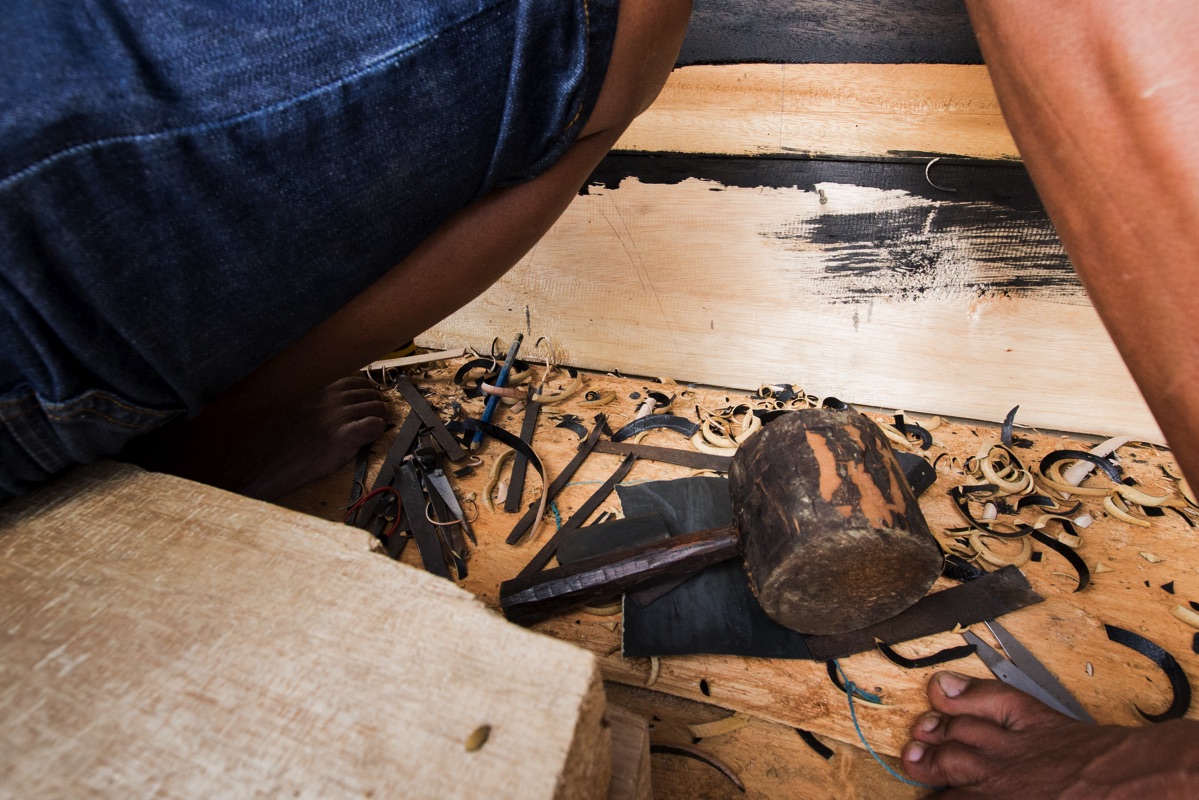
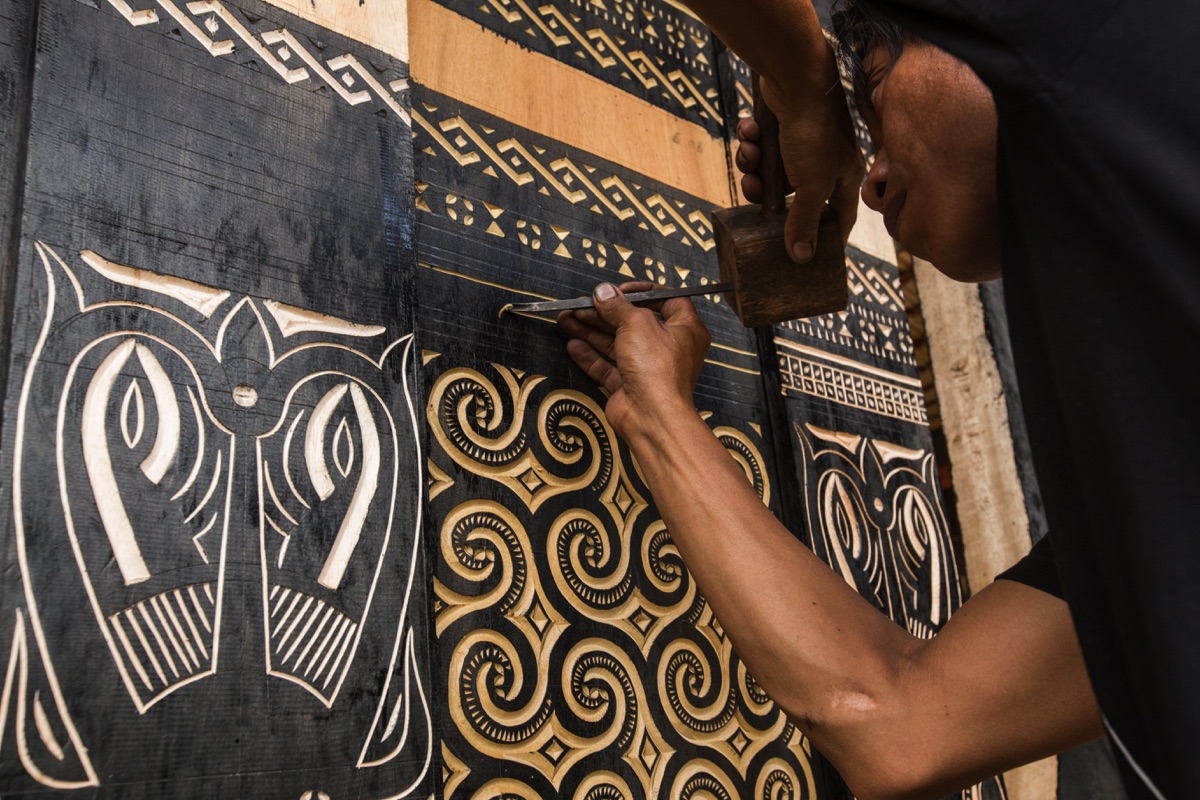
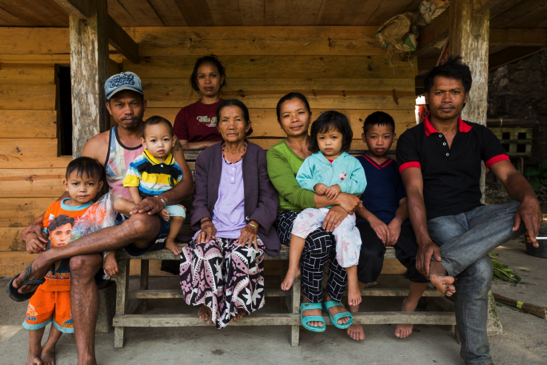
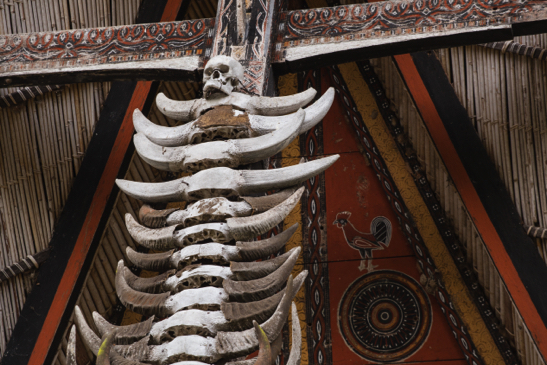
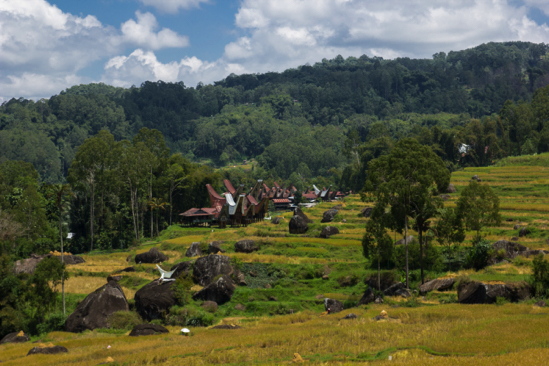
Leave a Reply